The Saguaro Cactus (Carnegiea gigantea)The saguaro cactus (pronounced “sah-wah-roh”), is the icon of the American west. Images of these cacti are seen all through our lives as a symbol of the American Desert. A trip to the Sonoran Desert is not complete without a examining of one of these famous desert plants. These huge green columnar cactus have fascinated nearly every person who has seen one. To the local Tohono O’Odham people, the saguaro cactus are even more important. These giant cactus are not plants to the Tohono O’Odham, but a different type of humanity, and are viewed as respected members of the Tohono O’Odham Tribe.
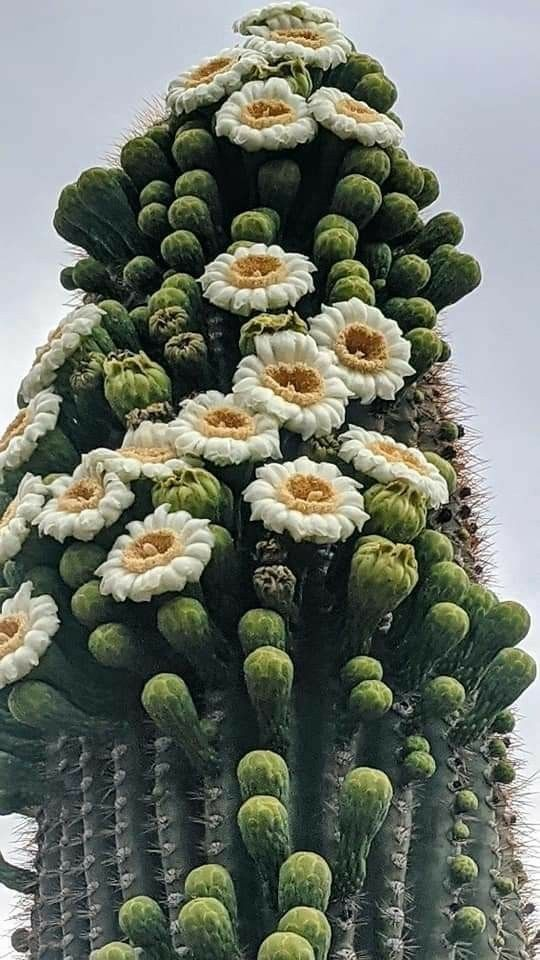
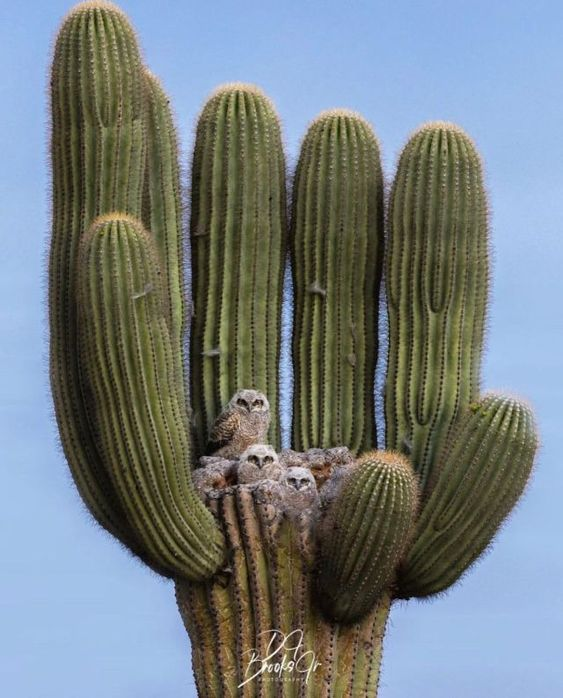
While the saguaro cactus has become a symbol of the American West, the saguaro cactus will only grow in the Sonoran desert. As a desert indicator species, the range of the saguaro cactus is limited to southern Arizona. Saguaro cactus will grow from sea level to about 4000 feet in elevation. The farther north and higher in elevation you go, the saguaro cactus will restrict their growth to the warmer, south facing slopes. Saguaro cactus are plentiful within Organ Pipe Cactus National Monument. Impressive “saguaro forests” can be seen along the Ajo Mountain Drive.
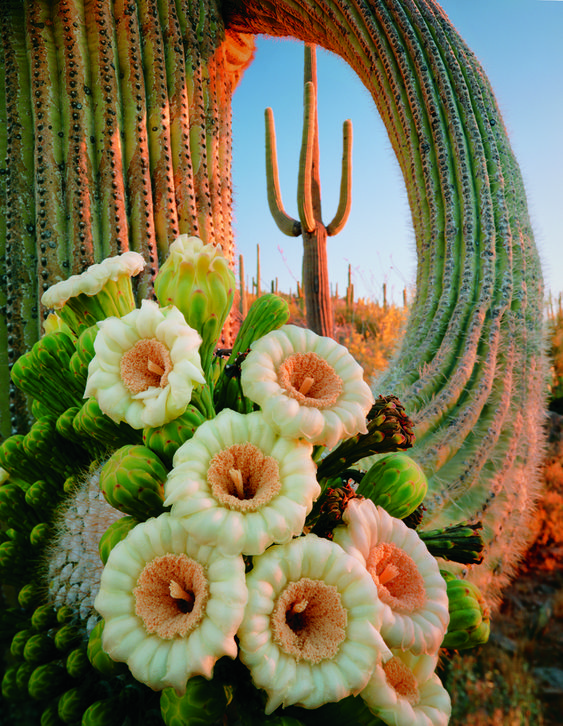
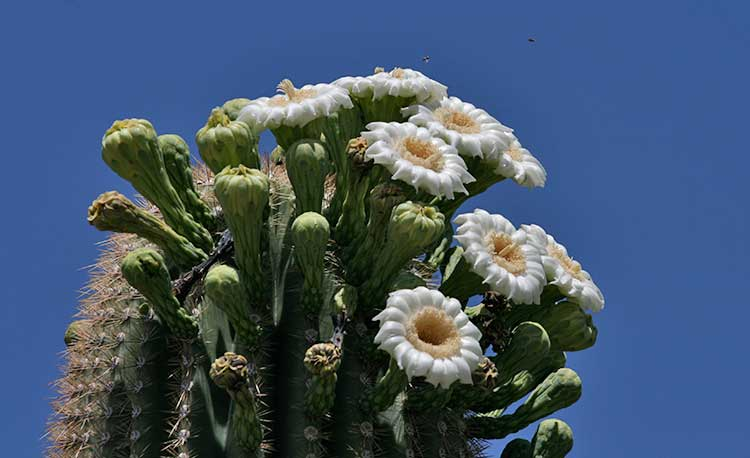
The saguaro cactus is the largest cactus in the United States, and will normally reach heights of 40 feet tall. The tallest saguaro cactus ever measured towered over 78 feet into the air. The saguaro cactus grows as a column at a very slow rate, with all growth occurring at the tip, or top of the cactus. It can take 10 years for a saguaro cactus to reach 1 inch in height. By 70 years of age, a saguaro cactus can reach 6 and a half feet tall, and will finally start to produce their first flowers. By 95-100 years in age, a saguaro cactus can reach a height of 15-16 feet, and could start to produce its first arm. By 200 years old, the saguaro cactus has reached its full height, reaching upwards of 45 feet tall. Some saguaros have been seen with dozens of arms, while other cactus never produce a single one. Why this happens remains one of the desert’s mysteries.
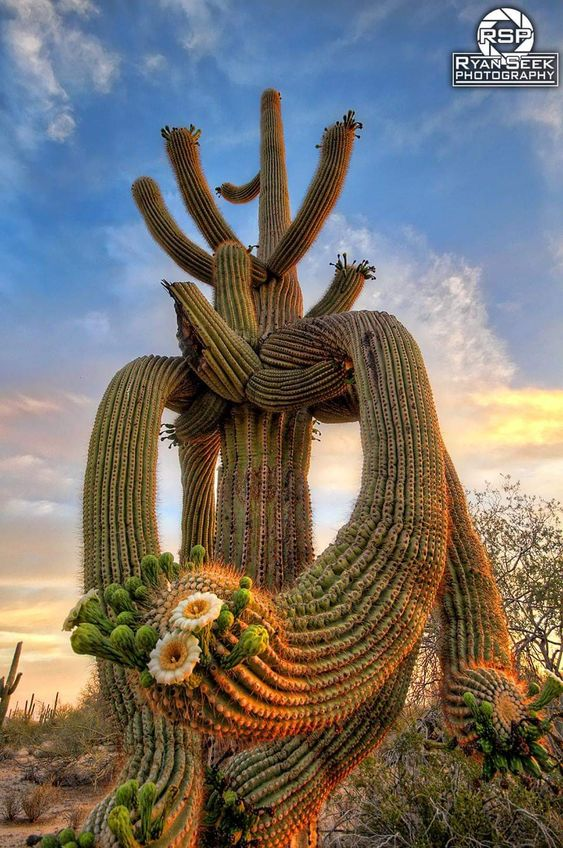
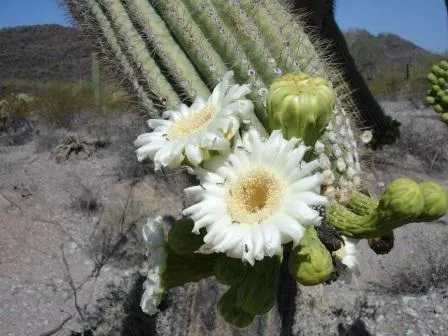
The saguaro cactus is a master of desert survival. Every aspect of this plant is specifically designed to thrive in the sometimes harsh Sonoran Desert. The skin of the saguaro cactus covered with a thick waxy coating that waterproofs the plant, and reduces water lost to the air through transpiration. The skin of the cactus is covered with hard spines and flexible bristles as a method of defending the water stored inside.
The root system of a saguaro cactus is equally as impressive. The cactus will send a large, single taproot straight down into the soil to a depth of about 5 feet. This taproot gives the cactus access to water that is stored deep underground. The main roots of the saguaro cactus are quite different. The cactus sends out a massive maze-like array of roots very close to the surface. On average, these roots lie within 3 inches of the surface, allowing the cactus to easily collect whatever rain might fall.
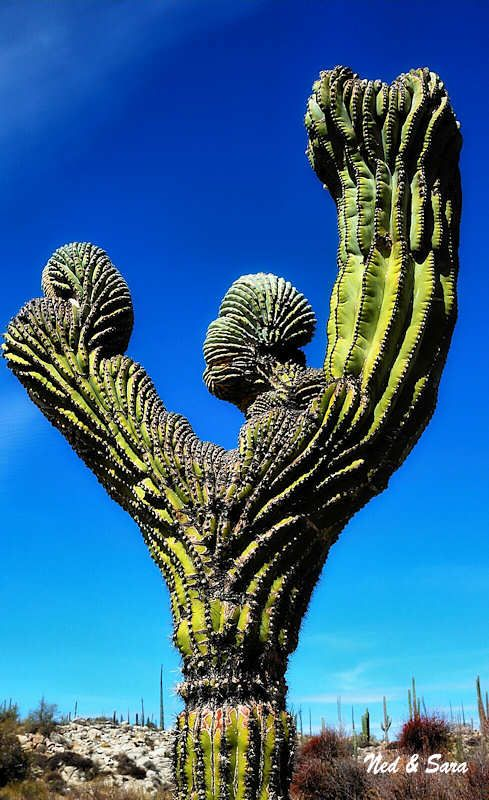
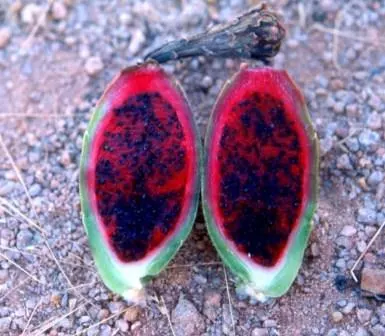
Very little water is instantly used. Instead, most of the water collected ends up being stored within the cactus to use during periods of drought. The interior of the cactus is filled with a sponge-like tissue, which is used to hold the water. As more and more water gets stored, the skin of the cactus begins to expand, making room for more storage. As a result, the saguaro cactus can become quite heavy as more and more water is stored. At full capacity, a foot of saguaro cactus can weigh upwards of 90 pounds, and a full height saguaro can weigh over a ton.

Saguaro cactus will produce flowers during late spring into early summer. In average years, the flowering occurs between April and June. The flowers are a milky white, and emit a sweet nectar which attracts multiple species of bats. These bats feast on the flower nectar, and in process act as pollinators for the saguaro cactus. As the cactus produce fruit, the bats will start to eat the fruits, and in turn help spread the saguaro seeds across the desert.

